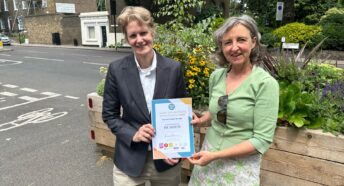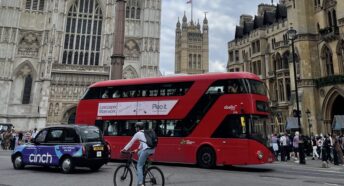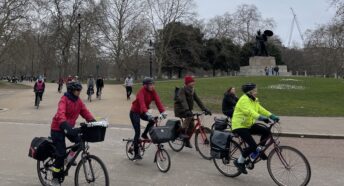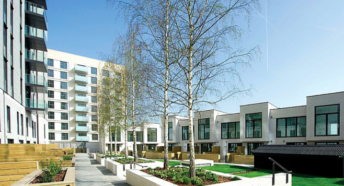Road danger in Hackney “highest among the London Boroughs”
Transport campaigners say council must take “urgent action to save lives”.
A coalition of transport campaigners [1] is calling on Hackney Council to take action to make its streets safe. Victoria Lebrec from RoadPeace, the national charity for road crash victims, said “Our new Healthy Streets Scorecard [2] shows that lots of people are walking and cycling in Hackney. That’s really important for health and a reflection of the councils’ ongoing efforts. But, per 1000 walking or cycling trips taken, the number of pedestrians and cyclists seriously or fatally injured in road traffic crashes is the highest among the London boroughs.[3] 215 people were killed or seriously injured in the 3 years 2015 to 2017 and that’s 215 too many.”
Simon Munk of London Cycling Campaign said: “Hackney has a long record on improving its roads, but the scorecard shows there is a need for more, urgent action to save lives. We want Hackney to push forward with changes to its main roads, with safe crossings and junctions, wider pavements and protected cycle tracks including on the A10, Mare Street and Hackney Road, and to build on Hackney’s many years of implementing low traffic neighbourhood schemes, so they cover all residential areas.”
Jeremy Leach from Action Vision Zero, a new organisation supporting local campaigners to end road danger and traffic harm, added: “Recent research has shown that creating safe infrastructure and in particular protected cycle lanes improves the safety of cyclists and other road users”[4].
Chris Barker of London Campaign for Better Transport said: “To eliminate road danger we also need to reduce the principal cause of that danger at source: the number of vehicles on our streets and roads. This can and has been done effectively with measures like the London Congestion Charge which led to meaningful reductions in traffic volumes but also significant reductions in crashes and fatalities.”[5]
Alice Roberts of CPRE London pointed out that these measures “won’t just make a huge difference to road safety in the borough, but also would reduce lethal pollution levels, enable far more people to walk, cycle and take public transport and revitalise communities. At least two thirds of households in Hackney don’t even own a car but are faced with car-dominant, dangerous environments nonetheless. That’s just plain not fair.”
ENDS
[1] Campaigners in the Healthy Streets coalition are CPRE London, Living Streets London, London Cycling Campaign, RoadPeace, Sustrans and Campaign for Better Transport London
[2] The London Boroughs Healthy Streets Scorecard report (which contains charts for each indicator), along with a spreadsheet with full data sets, is available at
http://www.cprelondon.org.uk/resources/item/2454-healthystreetsscorecard
https://lcc.org.uk/articles/healthy-boroughs
https://londonlivingstreets.com/london-boroughs-healthy-streets-scorecard/
[3] Average Annual Pedestrian and Cyclist Serious and Fatal Casualties/1,000 daily walking and cycling stages (average taken over 3 years) by London Borough, lowest to highest. These casualty figures are calculated on a per trip basis: they reflect the chances of being seriously injured or killed per cycled or walked journey – not just the total number of deaths and serious injuries.
Average Annual Pedestrian and Cyclist Serious and Fatal Casualties per 1,000 daily walking and cycling stages

[4] See https://actionvisionzero.org/what-to-campaign-for/safe-space-for-cycling/
[5] https://actionvisionzero.org/what-to-campaign-for/less-traffic/
A Study by University of Lancaster in 2015 found that the London Congestion Charge not only resulted in “meaningful” reductions of traffic volumes, but also “substantial” and “significant” reductions in crashes and fatalities – both in the charged area and in adjacent areas.







